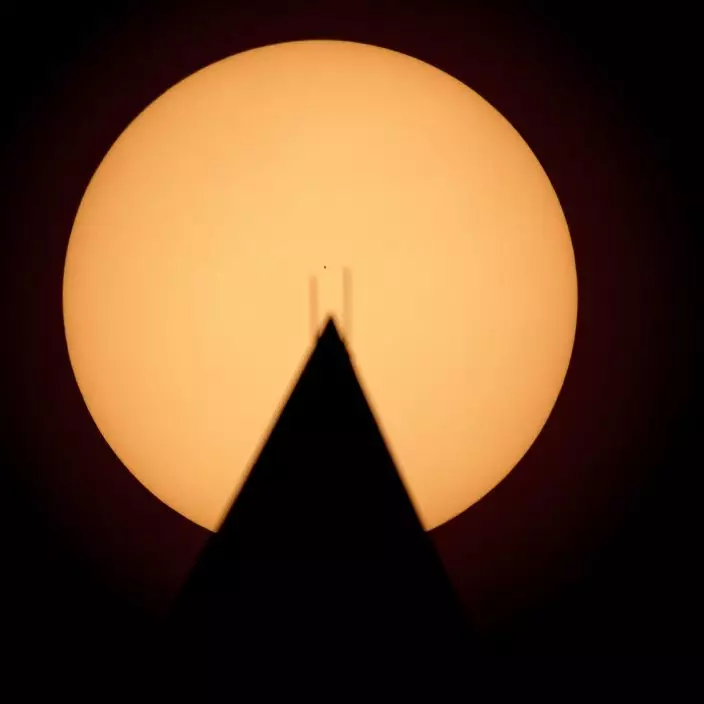Mini Mercury is skipping across the vast, glaring face of the sun in a rare celestial transit.
Stargazers used solar-filtered binoculars and telescopes to spot Mercury — a tiny black dot — as it passed directly between Earth and the sun on Monday.
The eastern U.S. and Canada get the whole 5 ½-hour show, along with Central and South America. The rest of the world, except for Asia and Australia, get just a sampling.

This image provided by NASA shows the planet Mercury in silhouette, low center, as it transits across the face of the sun behind the Washington Monument in Washington, Monday, Nov. 11, 2019. The solar system's smallest, innermost planet will resemble a tiny black dot Monday as it passes directly between Earth and the sun. (Bill IngallsNASA via AP)
Mercury is the solar system's smallest, innermost planet. The next transit isn't until 2032, and North America won't get another shot until 2049.
At Cape Canaveral, Florida, space buffs got a two-for-one. As Mercury's silhouette graced the sun, SpaceX launched 60 small satellites for global internet service.

Viewers look on during a brief break in the clouds to see a transit of the planet Mercury as it crosses the face of the sun Monday, Nov. 11, 2019, as seen from Seattle. Mercury and Venus are the only planets that can appear to pass in front of, or transit, the sun as seen from Earth. (AP PhotoElaine Thompson)

The planet Mercury is seen as a tiny dot above the mid-point of the sun during a transit across the face of the sun, partially obscured in clouds, Monday, Nov. 11, 2019, as seen from Seattle. Mercury and Venus are the only planets that can appear to pass in front of, or transit, the sun as seen from Earth. (AP PhotoElaine Thompson)

ADDS DATE- This image provided by NASA shows the planet Mercury in silhouette, low center, as it transits across the face of the sun on Monday, Nov. 11, 2019. The solar system's smallest, innermost planet will resemble a tiny black dot Monday as it passes directly between Earth and the sun. (Bill IngallsNASA via AP)


